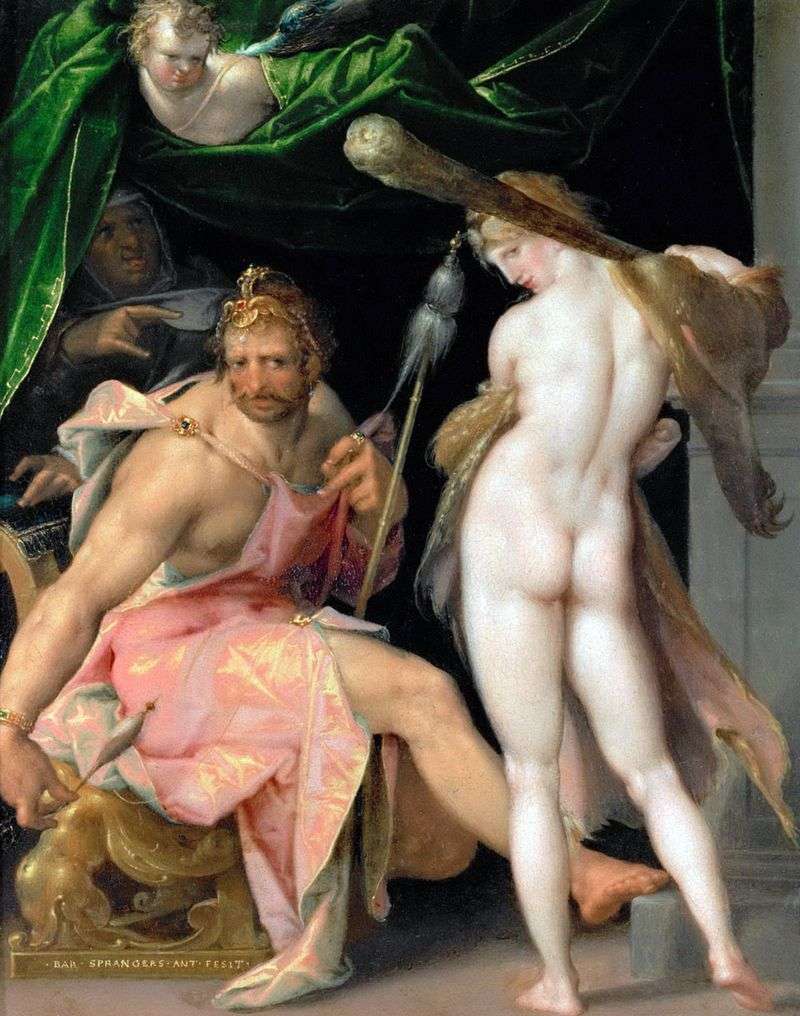
A painting by the Flemish painter Bartholomeus Spranger “Hercules and Omphalus”. The size of the picture is 24 x 19 cm, copper. The painting is based on ancient Greek mythological stories about Hercules. Omphala is the Lydian queen, the daughter of the god of the river Jardan, the widow of Tamola, the little Asian demi-goddess, half warlike, half feminine, the patroness of pleasures and the representative of female performance.
Omphala was considered the ancestor of the Lydian kings, mainly those that came from the Assyrian Heracleides. When Hercules, in punishment for the murder of Evretov’s son Iphitus, was sold by Hermes into slavery, Mrs. Omphalus turned out to be his mistress. Fascinated by her Hercules forgot about his militancy and masculinity, he folded a club and a lion’s hide at the feet of the queen and put on women’s clothes.
Instead of the previous heavy work, he now had to sit over the yarn in the circle of slaves and please the whims of his beloved mistress. Omphala had several children from Hercules. The myth of Hercules and Omphale was widely used by painters; so, the Pompeian painting is known, on which is depicted Hercules, dressed in women’s clothes, in the society of female slaves and a strict queen, who took away from the hero the attributes of his militancy.
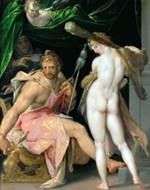 Hércules y Omphale – Bartholomeus Spranger
Hércules y Omphale – Bartholomeus Spranger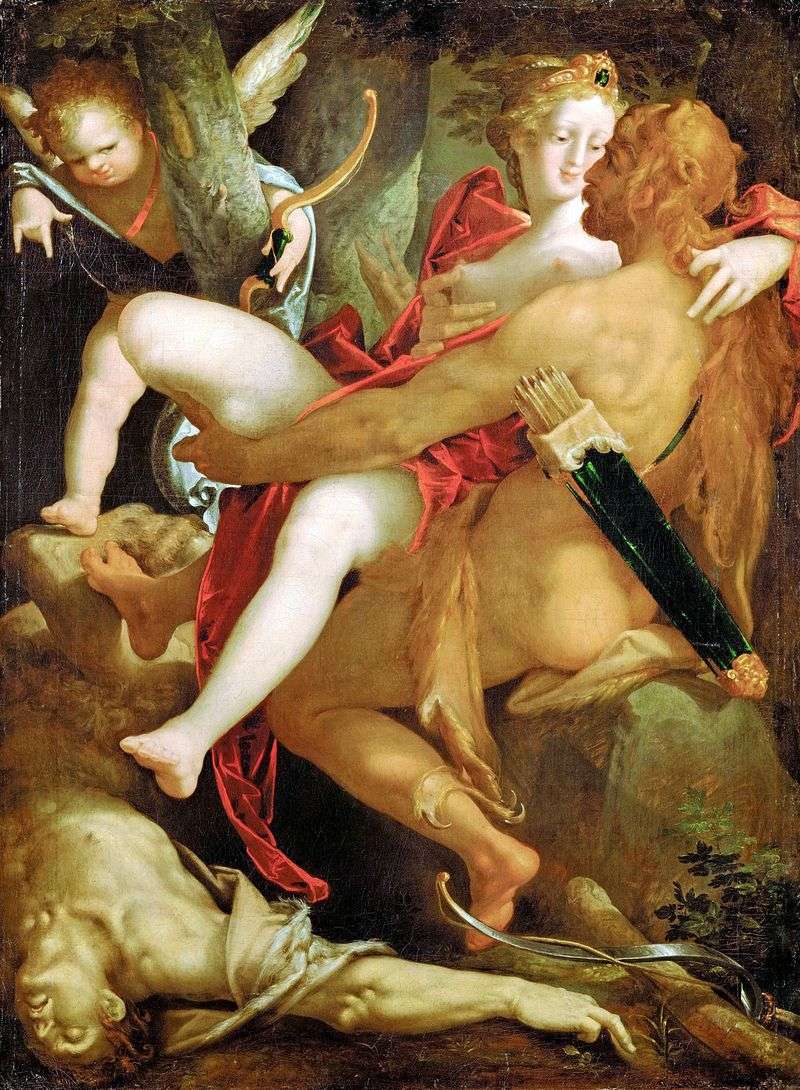 Hercules, Dejanira and the dead centaur Ness by Bartholomeus Spranger
Hercules, Dejanira and the dead centaur Ness by Bartholomeus Spranger Angelica and Medor by Bartholomeus Spranger
Angelica and Medor by Bartholomeus Spranger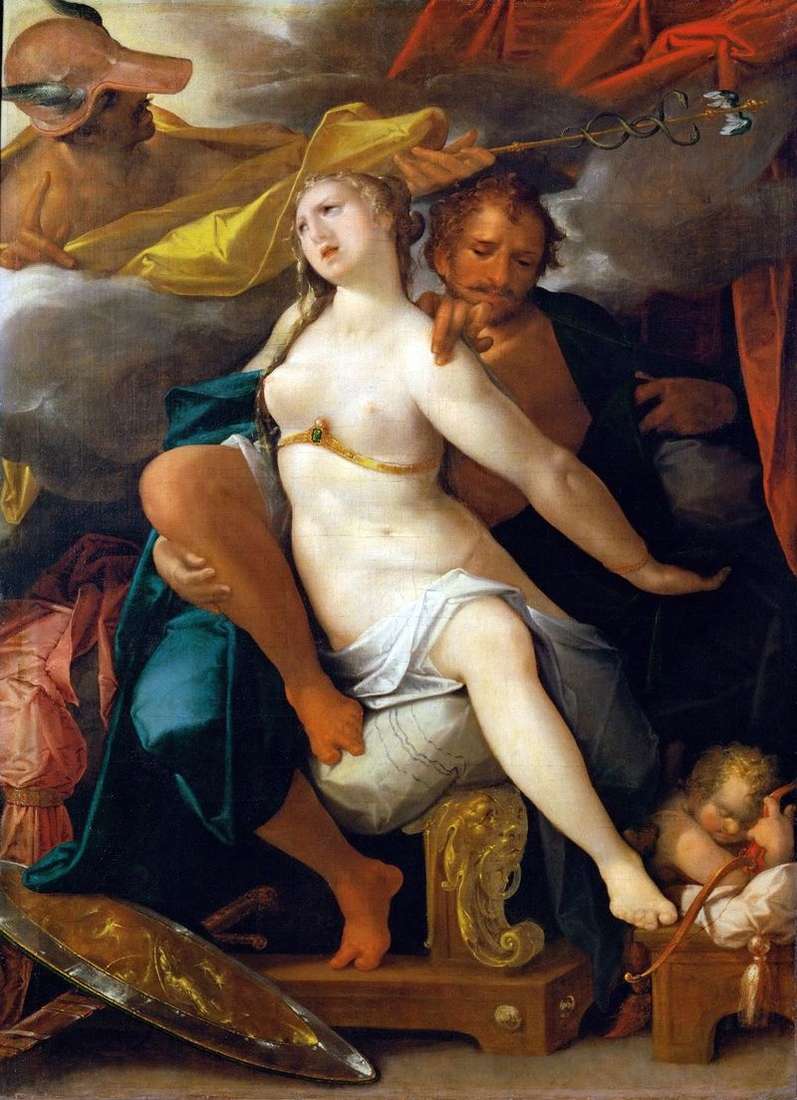 Mercury, Venus and Mars by Bartholomeus Spranger
Mercury, Venus and Mars by Bartholomeus Spranger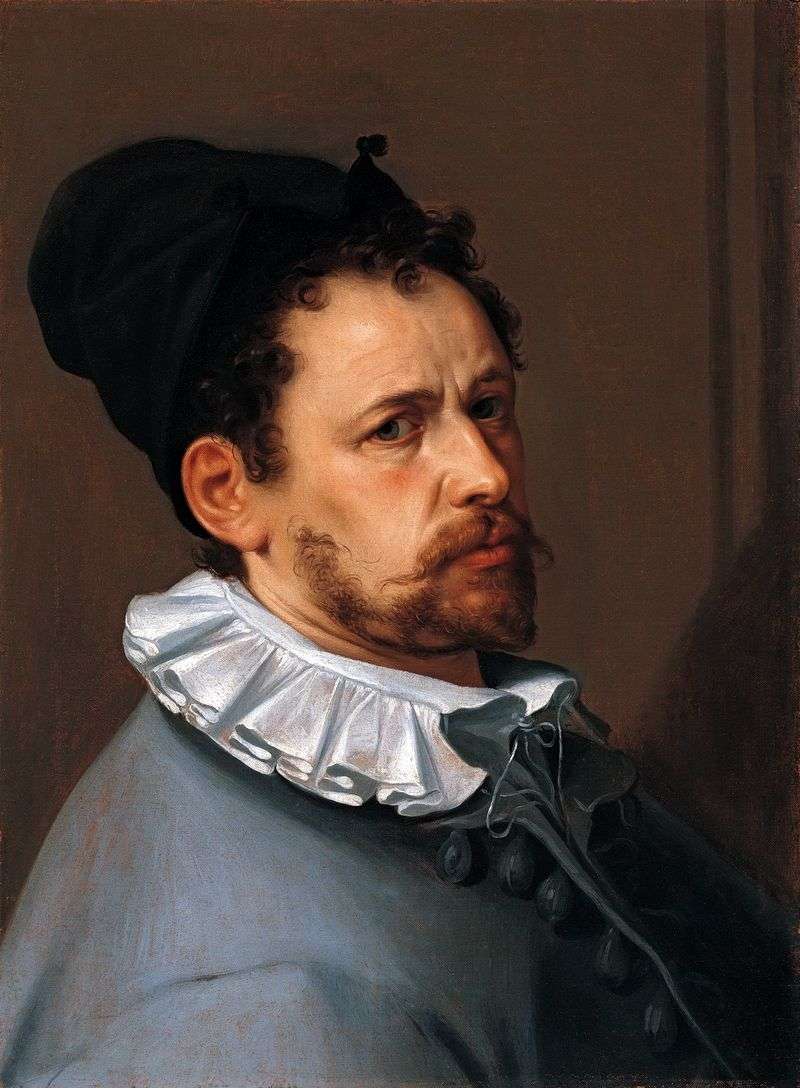 Self-portrait by Bartholomeus Spranger
Self-portrait by Bartholomeus Spranger Allegory of Justice by Bartholomeus Spranger
Allegory of Justice by Bartholomeus Spranger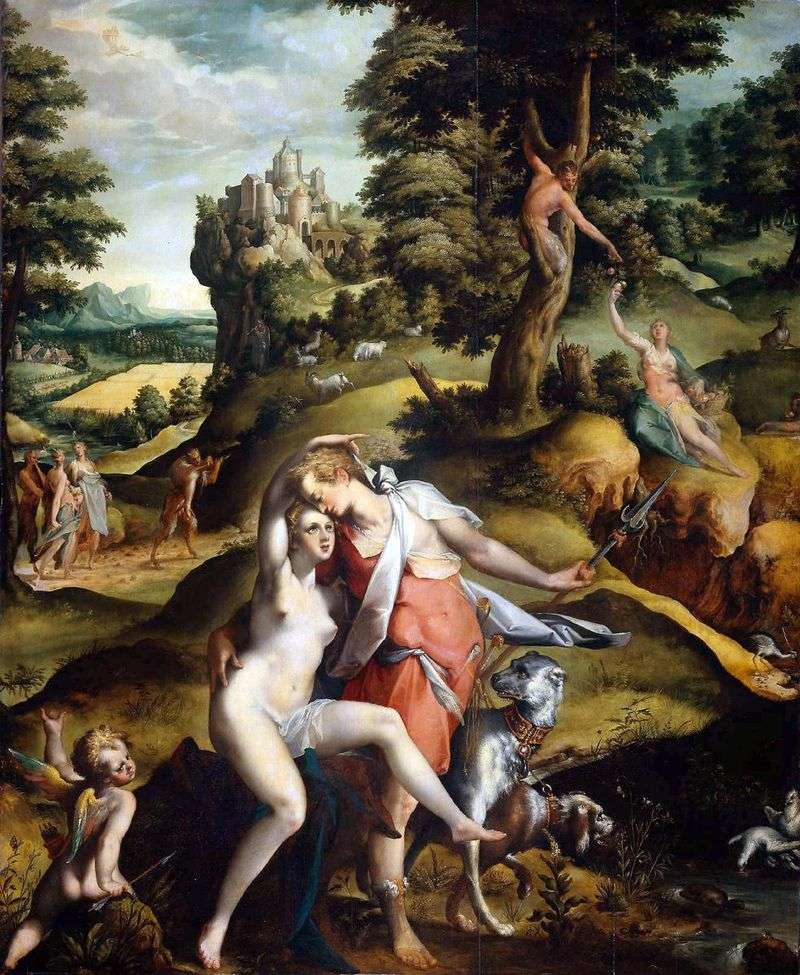 Adonis goes on a hunt by Bartholomeus Spranger
Adonis goes on a hunt by Bartholomeus Spranger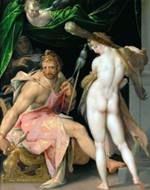 Hercules et Omphala – Bartolomeus Spranger
Hercules et Omphala – Bartolomeus Spranger